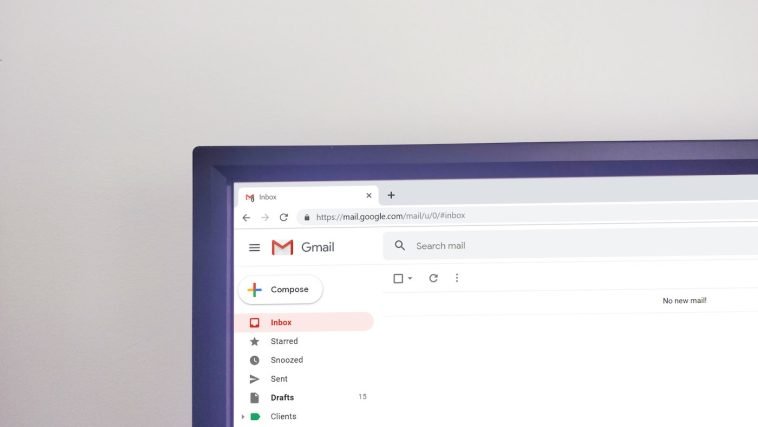Introduction.
Email marketing has long been recognized as one of the most effective and reliable digital marketing strategies.
It allows businesses to directly reach and engage with their target audience, build brand awareness, and drive conversions.
However, to truly harness the power of email marketing, it is crucial to measure its success and track key performance indicators (KPIs).
Measuring the effectiveness of your email campaigns provides valuable insights into customer engagement, allows you to identify areas of improvement, and enables data-driven decision-making.
In this guide, we will explore the essential metrics and strategies to help you measure the success of your email marketing efforts, giving you the tools to optimize your campaigns and achieve greater results.
Whether you’re an email marketing novice or an experienced marketer looking to enhance your performance, this guide will provide you with the knowledge and actionable steps to effectively measure your email marketing success. Let’s dive in!
What Is Email Marketing?
Email marketing is a digital marketing strategy that involves sending targeted emails to a group of individuals or subscribers to promote products, or services, or engage with the audience.
It is a direct and personalized form of communication between a business or organization and its customers or prospects.
Email marketing campaigns typically involve collecting email addresses from individuals who have shown interest in the business, either by signing up for a newsletter, making a purchase, or subscribing to a website. These email addresses are then used to send relevant and tailored messages to the recipients.
What are The Benefits Of Email Marketing?
In today’s digital era, where communication channels are vast and diverse, email marketing continues to prove its worth as an effective and reliable tool for businesses.
As one of the most direct and personalized forms of communication, email marketing offers a multitude of benefits for organizations looking to engage with their audience, promote their products or services, and build lasting customer relationships.
In this article, we will explore the key advantages of email marketing and why it remains a vital strategy for businesses of all sizes.
1. Targeted and Personalized Communication.
One of the greatest advantages of email marketing is its ability to deliver targeted and personalized messages to specific individuals or segments of your audience.
By collecting relevant data such as demographics, purchase history, and customer preferences, businesses can create highly tailored campaigns that resonate with recipients.
Personalized emails not only grab attention but also increase the chances of conversion, as customers feel valued and understood.
2. Cost-Effective and High ROI.
Email marketing offers an excellent return on investment (ROI) compared to other marketing channels.
It requires minimal upfront costs, as there are no printing or postage expenses involved. With email marketing platforms, businesses can automate the process, saving valuable time and resources.
Additionally, the ability to track and analyze email campaign performance allows for continuous improvement and optimization, maximizing the ROI even further.
3. Increased Conversion and Sales.
Email marketing has consistently proven its ability to drive conversions and boost sales. By delivering targeted offers, discounts, or exclusive promotions directly to customers’ inboxes, businesses can influence purchasing decisions and encourage immediate action.
Furthermore, with proper segmentation and personalization, businesses can ensure that the right message reaches the right audience at the right time, leading to higher engagement and conversion rates.
4. Enhanced Customer Engagement and Loyalty.
Regular and well-crafted email campaigns help businesses establish and nurture relationships with their customers.
By delivering valuable content, such as informative newsletters, industry insights, or helpful tips, businesses can position themselves as industry experts and trusted advisors.
Engaged customers are more likely to stay loyal, make repeat purchases, and even become brand advocates by sharing their positive experiences with others.
5. Measurable and Data-Driven Insights.
Email marketing provides businesses with a wealth of valuable data and insights. Through email analytics, organizations can track key metrics such as open rates, click-through rates, conversion rates, and subscriber behaviour.
This data helps in understanding customer preferences, optimizing campaigns, and refining marketing strategies for better results.
A data-driven approach allows businesses to make informed decisions and continually improve their email marketing efforts.
6. Increased Website Traffic and Brand Awareness.
Effective email marketing campaigns can drive traffic to your website, thus increasing brand visibility and awareness.
By including relevant links and compelling calls-to-action within emails, businesses can direct recipients to specific landing pages or product pages, increasing the likelihood of engagement and conversions.
Additionally, with the potential for recipients to forward or share emails with others, businesses can expand their reach and attract new customers.
7. Automation and Workflow Efficiency.
Email marketing platforms offer automation features that streamline and simplify the entire email marketing process.
With automation, businesses can set up personalized email sequences, welcome series, abandoned cart reminders, and other triggered campaigns.
This not only saves time but also ensures that the right message is delivered to the right person at the most opportune moment.
By automating repetitive tasks, businesses can focus on other important aspects of their operations while maintaining consistent communication with their audience.
8. A Channel of Direct Communication.
Email marketing provides a direct line of communication between businesses and their customers. Unlike social media platforms or search engine algorithms that constantly evolve, businesses have control over their email lists and can directly reach out to their subscribers.
This direct communication allows businesses to deliver important updates, announcements, or customer service information in a timely and efficient manner.
9. Integration with Other Marketing Channels.
Email marketing seamlessly integrates with other marketing channels to create a cohesive and holistic marketing strategy.
Businesses can use email to reinforce and amplify their social media campaigns, promote blog posts or content, announce upcoming events, or even conduct surveys to gather valuable feedback.
By leveraging the power of multiple channels, businesses can create a consistent brand experience and maximize the impact of their marketing efforts.
10. Regulatory Compliance and User Consent.
In recent years, data privacy regulations such as the General Data Protection Regulation (GDPR) and the California Consumer Privacy Act (CCPA) have become increasingly important.
Email marketing provides businesses with the means to comply with these regulations by ensuring proper user consent, providing clear unsubscribe options, and implementing robust data protection measures.
By following best practices and respecting customer privacy, businesses can build trust and maintain a positive reputation.
How Do I Measure My Email Marketing Success?
Email marketing is a powerful tool that enables businesses to connect with their audience, build relationships, and drive conversions.
However, to truly harness its potential, it is essential to measure the success of your email marketing campaigns.
By tracking key performance indicators (KPIs) and analyzing the data, you can gain valuable insights into your campaign’s effectiveness, identify areas for improvement, and make data-driven decisions.
In this article, we will explore the essential metrics and strategies to help you measure the success of your email marketing efforts, allowing you to optimize your campaigns and achieve greater results.
1. Define Your Goals.
Before diving into measuring email marketing success, it is crucial to establish clear goals for your campaigns.
What do you want to achieve? Are you looking to increase open rates, click-through rates, or conversions?
Define specific, measurable, achievable, relevant, and time-bound (SMART) goals that align with your overall marketing objectives.
Having well-defined goals will help you determine the appropriate metrics to track and provide a benchmark for evaluating success.
2. Monitor Open Rates.
One of the fundamental metrics to measure email campaign success is the open rate. It indicates how many recipients opened your email and can be a strong indicator of the effectiveness of your subject line and preheader text.
A low open rate may suggest that your subject line needs improvement, or that your emails are not resonating with your audience.
To improve open rates, consider personalizing subject lines, A/B testing different approaches, and segmenting your email list based on subscriber preferences.
3. Track Click-Through Rates (CTR).
Click-through rates measure the percentage of recipients who clicked on a link within your email. This metric helps evaluate the relevance and effectiveness of your content, as well as the call-to-action (CTA) placement.
A high CTR indicates that your emails are engaging and compelling, driving users to take the desired action.
To boost CTR, ensure your emails have clear and compelling CTAs, use eye-catching visuals, and optimize your email design for mobile devices.
4. Analyze Conversion Rates.
Ultimately, the success of your email marketing campaigns lies in the conversions they generate. Conversion rates measure the percentage of recipients who complete a desired action, such as making a purchase, filling out a form, or downloading content.
To measure conversion rates accurately, track the actions taken by recipients after clicking on your email links, and integrate your email marketing platform with web analytics tools or conversion tracking pixels.
Analyzing conversion rates allows you to assess the effectiveness of your emails in driving meaningful actions and helps you optimize your conversion funnels accordingly.
5. Evaluate Subscriber Engagement.
In addition to specific metrics like open rates and CTR, it is essential to evaluate overall subscriber engagement.
Look at metrics such as the number of unsubscribes, spam complaints, and inactive subscribers. High unsubscribe rates or an increase in spam complaints may indicate issues with your content, frequency, or list hygiene.
Regularly clean your email list to remove inactive subscribers and consistently provide valuable content to keep your audience engaged.
6. Utilize A/B Testing.
A/B testing is a valuable technique to optimize your email marketing campaigns. It involves creating two or more versions of an email with slight variations and sending them to different segments of your audience.
By comparing the performance of each variant, you can identify which elements resonate better with your subscribers, such as subject lines, CTAs, or content structure.
A/B testing allows you to make data-driven decisions, refine your strategies, and continuously improve the effectiveness of your email marketing.
7. Use Email Analytics Tools.
To simplify the process of measuring email marketing success, leverage the power of email analytics tools.
Most email marketing platforms provide built-in analytics that offers insights into key metrics, such as open rates, click-through rates, and conversions.
These tools enable you to track your campaigns, segment your audience, and generate detailed reports to analyze performance over time.
Additionally, consider integrating your email marketing platform with web analytics tools like Google Analytics to gain a holistic view of your email-driven traffic and conversions.
8. Monitor Email Deliverability.
Email deliverability is a crucial factor in measuring the success of your email marketing. It refers to the ability of your emails to reach your subscribers’ inboxes rather than being marked as spam or getting lost in transit.
Monitoring your email deliverability metrics, such as bounce rates and spam complaints, helps you identify potential deliverability issues.
High bounce rates may indicate problems with your email list quality or email authentication setup, while an increase in spam complaints requires a review of your email content or sending practices.
Regularly monitor and address deliverability issues to ensure your messages reach your intended audience.
9. Measure Return on Investment (ROI).
While engagement metrics like open rates and click-through rates are valuable, measuring the return on investment (ROI) of your email marketing efforts provides a clear picture of their overall impact on your business.
To calculate ROI, compare the revenue generated from your email campaigns against the costs incurred, including campaign creation, email software, and staff time.
Tracking revenue attribution accurately may require the integration of your email marketing platform with your CRM or e-commerce system.
Calculating ROI allows you to assess the financial success of your email marketing campaigns and make informed decisions about resource allocation and future strategies.
10. Analyze Email Segmentation and Personalization.
Segmentation and personalization are powerful techniques to improve the relevance and effectiveness of your email campaigns.
Analyze the performance of segmented campaigns compared to non-segmented ones to determine if your targeted messaging resonates better with specific segments of your audience.
Additionally, assess the impact of personalization elements, such as dynamic content, personalized subject lines, or product recommendations, on your open rates, click-through rates, and conversions.
Analyzing the effectiveness of segmentation and personalization helps you refine your targeting strategies and create more personalized and engaging email experiences.
11. Benchmark Against Industry Standards.
To gain a broader perspective on your email marketing success, compare your performance against industry benchmarks and averages.
Research industry-specific email marketing benchmarks or refer to reports published by reputable marketing organizations to understand how your metrics stack up against the competition.
Benchmarking allows you to identify areas where you excel or lag, providing insights into potential opportunities for improvement or areas of strength.
12. Continuously Test and Optimize.
Measuring email marketing success is an ongoing process. Continuously test different elements of your email campaigns, such as subject lines, CTAs, visuals, or sending times, to identify what resonates best with your audience.
Implement the insights gained from measurement and analysis to optimize your future campaigns. By adopting a mindset of continuous improvement, you can refine your strategies, enhance engagement, and drive better results over time.
Conclusion.
Measuring the success of your email marketing campaigns is crucial for optimizing your strategies, improving engagement, and achieving your marketing goals.
By tracking metrics such as open rates, click-through rates, conversion rates, subscriber engagement, and ROI, you can gain valuable insights into the effectiveness of your campaigns.
Utilize A/B testing, email analytics tools, and industry benchmarks to make data-driven decisions and continuously optimize your email marketing efforts.
Remember, success is not a one-time achievement but an ongoing process of measurement, analysis, and improvement, leading to enhanced customer engagement and better business outcomes.






GIPHY App Key not set. Please check settings